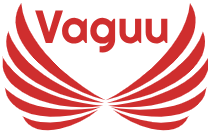Looking to skyrocket your website’s visibility on search engines? Dive into our comprehensive guide featuring 25 key features that can turbocharge your SEO rankings! From crafting compelling content to optimizing your site’s speed and structure, we’ve got you covered with easy-to-implement strategies to help you climb the search results ladder. Let’s unlock the secrets to getting noticed online together!
High-Quality Content: Craft content that’s informative, engaging, and valuable to your audience. It’s the foundation of good SEO!
Keyword Research: Find out what words and phrases your audience is searching for, and sprinkle them naturally throughout your content.
Title Tags: Make sure your title tags are catchy, descriptive, and include your target keywords.
Meta Descriptions: Write compelling meta descriptions that entice users to click through to your site from search results.
User Experience (UX): Create a seamless and intuitive browsing experience for your visitors. Google loves sites that users love!
Mobile-Friendliness: Optimize your site for mobile devices to ensure it looks and performs great on smartphones and tablets.
Page Speed: Nobody likes waiting for a slow website to load. Speed up your site for better user experience and improved rankings.
Internal Linking: Link to other relevant pages on your site to help users navigate and improve your site’s overall structure.
External Linking: Link to reputable external sites when it makes sense to do so. It shows that you’re a part of a larger online community.
Image Optimization: Don’t forget to optimize your images by using descriptive filenames and alt tags.
SSL Certificate: Secure your site with an SSL certificate to build trust with your visitors and boost your search rankings.
Structured Data Markup: Implement structured data markup to help search engines understand the content on your site better.
Social Media Presence: Build a strong presence on social media platforms to increase brand visibility and drive traffic to your site.
Local SEO: If you have a physical location, optimize your site for local search to attract customers in your area.
Backlinks: Earn high-quality backlinks from authoritative sites to improve your site’s credibility and ranking.
Regular Updates: Keep your site fresh and up-to-date with new content and regular maintenance.
URL Structure: Use clear, descriptive URLs that include relevant keywords to help users and search engines understand what your page is about.
Sitemap: Create and submit a sitemap to search engines to ensure all your pages are indexed properly.
Canonical Tags: Use canonical tags to indicate the preferred version of a page when you have similar or duplicate content.
404 Pages: Customize your 404 error page to provide a helpful and user-friendly experience for visitors who land on broken links.
Social Sharing Buttons: Make it easy for visitors to share your content on social media by including social sharing buttons.
Engagement Metrics: Monitor metrics like bounce rate, time on page, and click-through rate to understand how users interact with your site.
Long-Form Content: Don’t shy away from long-form content if it adds value to your audience. Sometimes, more is more!
Local Listings: Claim and optimize your business listings on platforms like Google My Business to improve local search visibility.
Continuous Learning: Stay up-to-date with the latest SEO trends and best practices through blogs, forums, and online courses. SEO is always evolving, so keep learning and adapting!
Remember, SEO is a marathon, not a sprint. Focus on providing value to your audience, and the rankings will follow!

